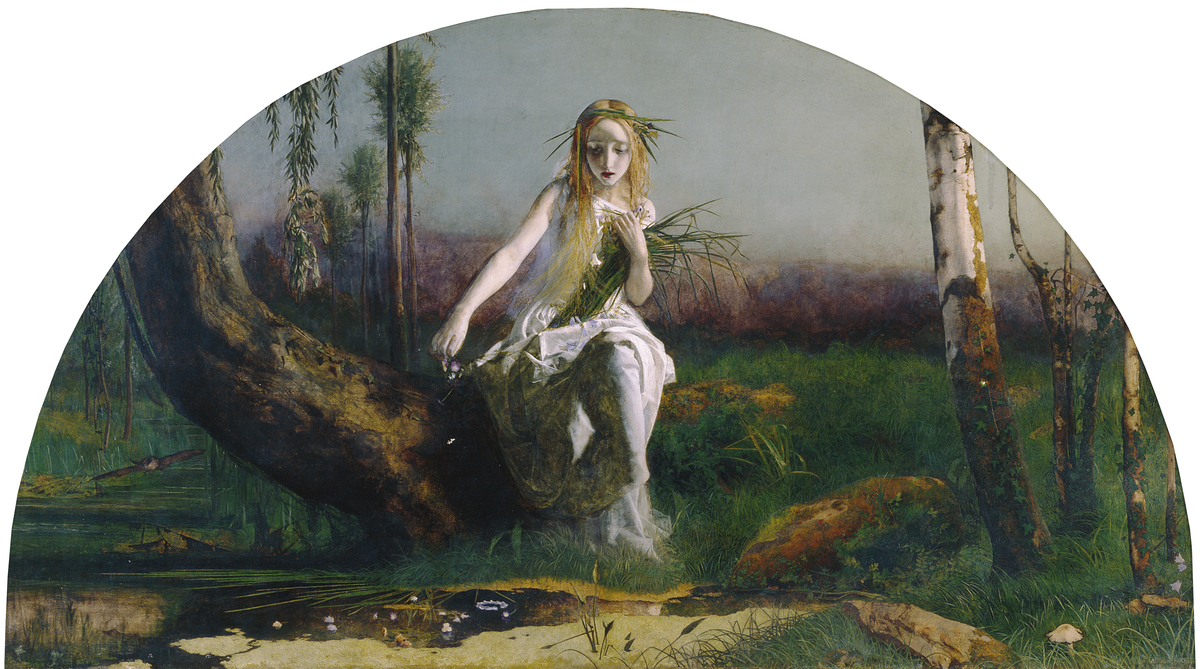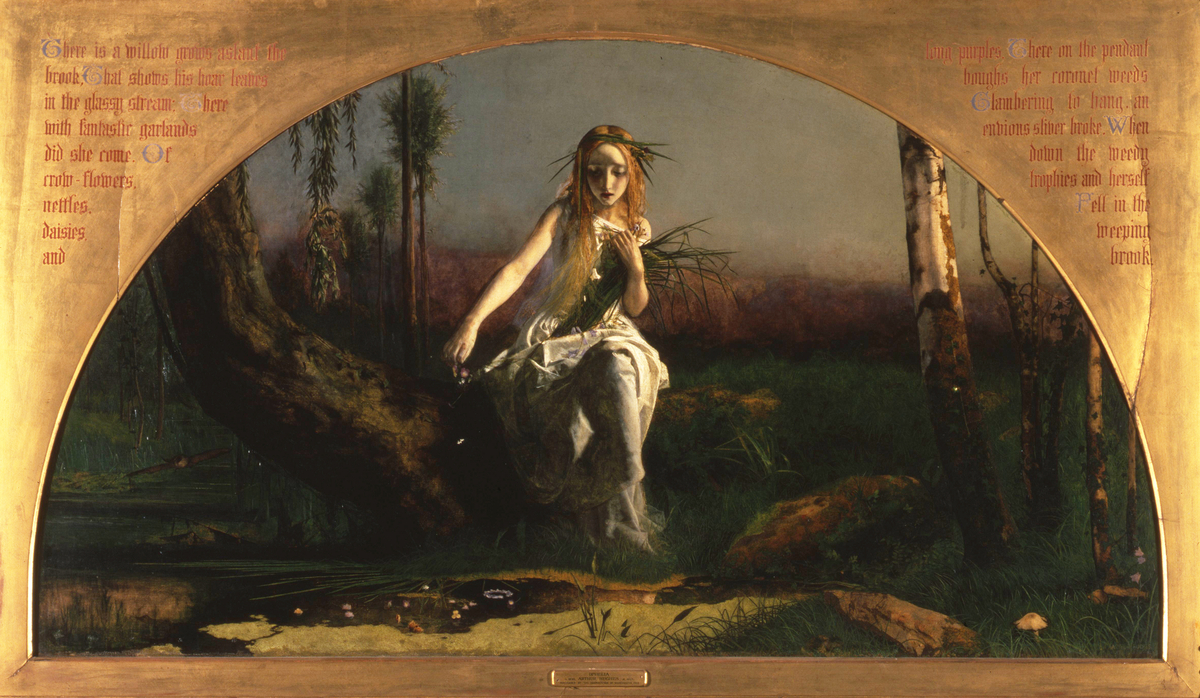Ophelia
Summary
In a dark, swampy, woodland setting, Ophelia, with a sorrowful expression, is seated in the centre, on the base of a overhanging willow tree, next to a stream. She is a delicate, pale young girl with long fair hair, and is dressed in white drapery, with a crown of reeds and flowers on her head. She holds more reeds and flowers close to her chest with her left arm, dropping purple and white flowers into the stream below with her right hand. Green algae floats on the top of the stream, a toadstool growing nearby, on the right, next to silver birch trunks, which extend out of view. On the far left, a bat swoops over the stream, towards the viewer. The background changes from the green woodland ground to purple, and then to blue/grey at the top of the canvas. A semi-circular canvas set in a rectangular frame. The original frame is gilt plaster with ivy moulding, the Hamlet quotation, in red and blue, on either side of the painting in Gothic script. The scene depicted is of the circumstances of Ophelia's death described in Shakespeare's Hamlet, Act 4, Scene 7.
Display Label
Gallery text panel The Pre-Raphaelites in their Time Britain's first and best-known radical art movement emerged from within the Royal Academy in 1848. Its original members were rebellious art students who were disillusioned with contemporary practice. They looked back to Italian art before Raphael, seeing the pre-1500 period as one of great sincerity. They called themselves the Pre-Raphaelite Brotherhood. In an age of rapid industrial and urban expansion, Pre-Raphaelite artists like Rossetti, Hunt and Millais, and pioneering design reformers such as William Morris, sought a return to pre-industrial values of art and design in truth to nature and materials, and good workmanship. In addition, the arts of the Middle Ages and Middle East were important sources of stylistic inspiration. The Bible, literature and contemporary life were preferred over subjects derived from classical mythology. The Brotherhood also rejected contrived studio lighting and took canvases outside to paint directly from nature. Although attempting to convey exactly what they saw, they created a heightened reality of dream-like intensity with minute details and bright, dazzling colours. Their art was a new kind of history painting for a new age.
Object Name
Ophelia
Creators Name
Date Created
1852
Dimensions
Canvas: 68.7cm x 123.8cm
Temp frame: 93cm x 148cm
Frame: 94cm x 148cm
accession number
1955.105
Place of creation
England
Support
Canvas
Medium
Oil paint
Legal
© Manchester Art Gallery


